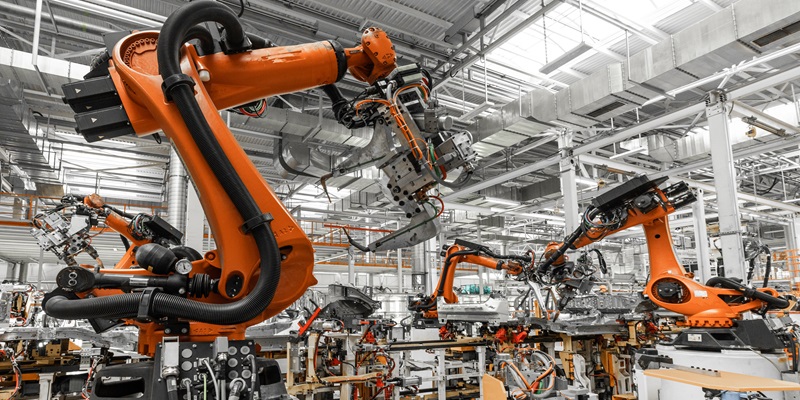In today’s rapidly evolving technological landscape, collaborative robots, or cobots, have emerged as innovative solutions that work alongside humans to enhance productivity and streamline operations. These versatile machines are designed to assist humans in performing various tasks, eliminating bottlenecks and optimizing workflow efficiency. However, by incorporating augmented reality (AR) and artificial intelligence (AI) technologies, cobots can revolutionize industries, making them even more adaptable, intuitive, and effective.
Advancements in Cobots with AI Technology
Artificial Intelligence (AI) technology has emerged as a disruptive force capable of taking cobot capabilities to the next level. By integrating AI, cobots gain the ability to analyze vast amounts of data, make informed decisions, and adapt to changing environments. This expanded capability opens up new avenues for productivity improvement, safety enhancement, and increased accuracy in task execution.
Cobots and their Applications
The versatility of cobots allows them to assist humans in a multitude of ways, significantly impacting diverse industries. From manufacturing and logistics to healthcare and retail, cobots can be deployed to improve a range of processes. For instance, cobots can enhance data analysis and demand forecasting, enabling organizations to make informed decisions based on real-time insights. Moreover, these machines offer relief to workers burdened by monotonous and mundane tasks, empowering them to focus on higher-value responsibilities.
Creating Value with the Combination of Cobots and Technologies
The true value of cobots lies in their integration with a suite of cutting-edge technologies. By combining cobots with AI, large language models (LLMs), real-time vision, low- and no-code interfaces, and simulation, organizations can unlock unprecedented efficiencies. These technologies supplement cobots’ abilities, enabling them to perform complex tasks with ease, adapt to dynamic environments, and interact seamlessly with humans.
Enhancing Cobots with Large Language Models (LLMs)
Large Language Models (LLMs) offer cobots the ability to engage in natural conversations with humans. With the integration of LLMs, cobots can comprehend and respond to human queries, enabling intuitive and efficient communication. Researchers are also exploring ways in which LLMs can assist cobots in planning various action sequences, generating reward functions for reinforcement learning, navigating more efficiently, and improving human interaction. This integration vastly enhances cobots’ problem-solving capabilities, enabling them to effectively tackle complex tasks.
Strategic Investments in Cobots
To maximize the benefits of cobots, organizations should focus their investments strategically, targeting areas with the highest potential for revenue generation, cost reduction, or risk mitigation. By identifying critical pain points in their operations, businesses can leverage cobots to streamline processes, reduce errors, and optimize resource allocation. Careful consideration of the areas where cobots can deliver the most value ensures a significant return on investment.
Support and Upskilling for Cobots
While cobots offer tremendous potential, they can only excel with proper human support. Organizations must prioritize upskilling and reskilling their workforce to fully exploit cobot technology. Training employees to collaborate effectively with cobots is crucial for achieving operational excellence and workplace safety. Additionally, fostering a culture of adaptability and continuous learning ensures that both humans and cobots evolve together, capitalizing on the full range of benefits this technology offers.
With the rapid advancement of cobot technology, the incorporation of augmented reality and AI promises to revolutionize industries worldwide. By enhancing cobots with AR and AI, businesses can unleash their full potential, unlocking unprecedented levels of productivity, safety, and accuracy. Strategic investments, combined with extensive support and upskilling for the workforce, are essential for reaping the benefits of this technology and avoiding misuse. Embracing cobots with AR and AI technology will undoubtedly pave the way for a more efficient and collaborative future. It is time for organizations to seize this opportunity and leverage cobots effectively to stay ahead in the ever-evolving industrial landscape.

